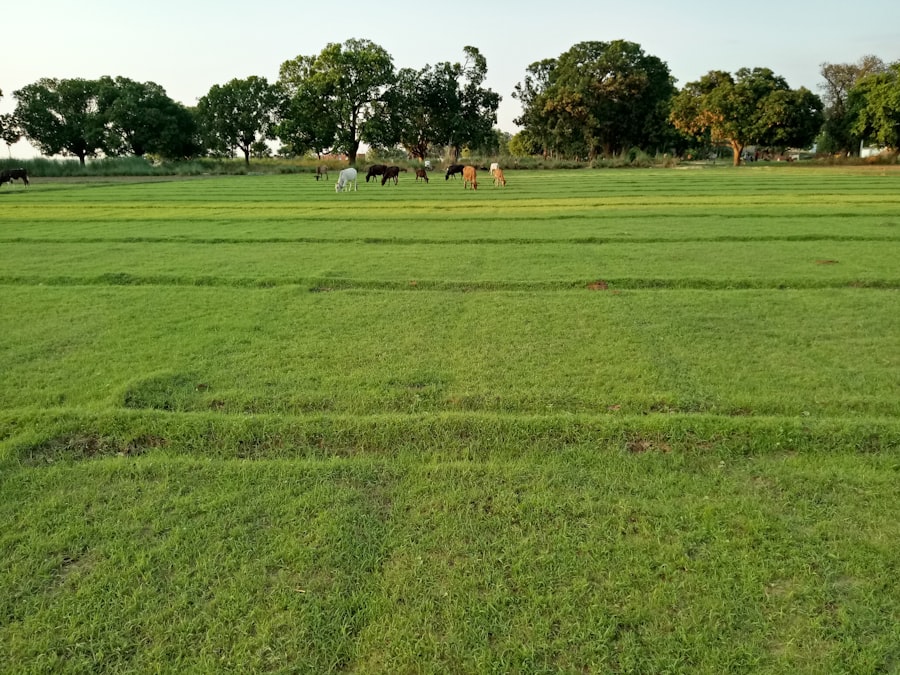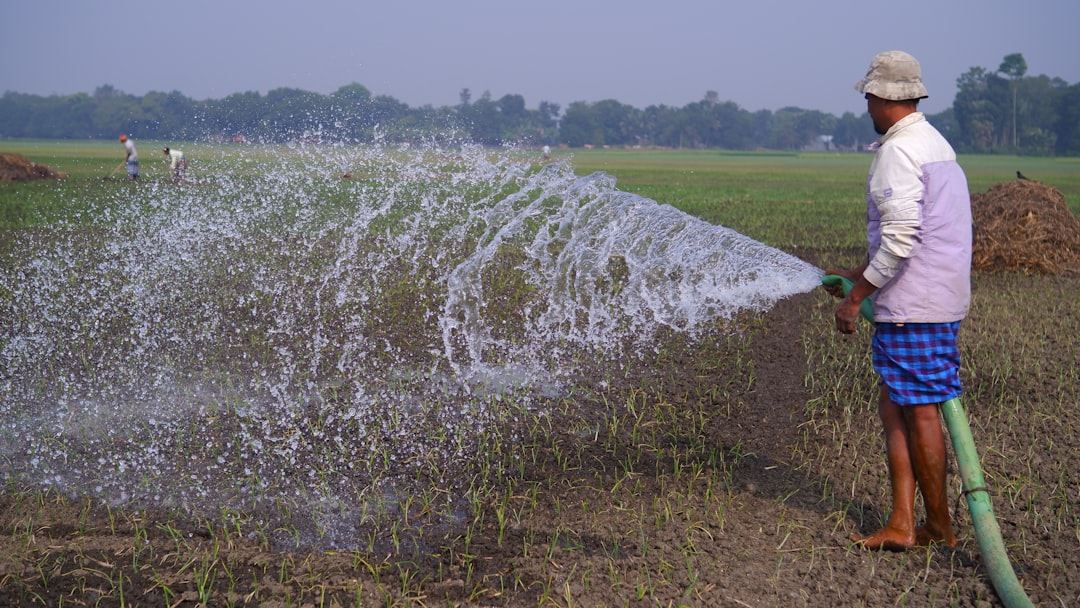Center pivot irrigation has emerged as a revolutionary method in agricultural practices, particularly in regions where water scarcity poses a significant challenge. This system, characterized by its rotating arms that distribute water in a circular pattern, allows farmers to efficiently irrigate large tracts of land with minimal labor and resource expenditure. The design of center pivot systems enables them to cover vast areas, making them particularly advantageous for large-scale farming operations.
As agriculture continues to evolve, the adoption of center pivot irrigation has become increasingly prevalent, driven by the need for sustainable practices that maximize crop yield while conserving water. The history of center pivot irrigation dates back to the 1950s when it was first introduced in the United States. Since then, advancements in technology and engineering have led to more sophisticated systems that incorporate features such as variable rate irrigation and automated controls.
These innovations have not only improved the efficiency of water usage but have also enhanced the overall productivity of agricultural lands. As farmers face mounting pressures from climate change and population growth, center pivot irrigation stands out as a viable solution that addresses both economic and environmental concerns.
Key Takeaways
- Center pivot irrigation is a popular method of crop irrigation that involves a rotating system of sprinklers mounted on wheeled towers.
- Efficient water management is crucial for maximizing crop yield and minimizing water wastage in center pivot irrigation systems.
- Soil erosion and compaction can be minimized by proper management of center pivot irrigation systems and regular maintenance of the soil.
- Regular maintenance and repair of center pivot irrigation systems are essential for ensuring optimal performance and longevity.
- Power supply and energy costs are important considerations for the operation of center pivot irrigation systems, and advancements in technology can help reduce energy consumption.
Water Management and Efficiency
Effective water management is crucial in agriculture, and center pivot irrigation systems excel in this regard. By delivering water directly to the root zones of crops, these systems minimize evaporation and runoff, ensuring that a higher percentage of water reaches the plants. This targeted approach not only conserves water but also promotes healthier crop growth, as plants receive the precise amount of moisture they require.
Furthermore, many modern center pivot systems are equipped with sensors and controllers that allow for real-time monitoring of soil moisture levels, enabling farmers to adjust irrigation schedules based on actual needs rather than relying on fixed routines. The efficiency of center pivot irrigation is further enhanced by its ability to apply water uniformly across the field. Unlike traditional irrigation methods that may lead to uneven distribution, center pivots ensure that every part of the field receives an adequate supply of water.
Additionally, the integration of advanced technologies such as GPS and remote sensing has allowed farmers to optimize their irrigation practices even further, leading to significant reductions in water usage while maintaining or increasing productivity.
Soil Erosion and Compaction

While center pivot irrigation offers numerous benefits, it is not without its challenges, particularly concerning soil erosion and compaction. The repetitive movement of heavy machinery across fields can lead to soil compaction, which negatively impacts root development and water infiltration. Compacted soil restricts the movement of air and water, creating an environment that is less conducive to healthy plant growth.
Farmers must be vigilant in monitoring soil conditions and implementing practices that mitigate compaction, such as rotating crops or using cover crops to improve soil structure. Soil erosion is another concern associated with center pivot irrigation. Although the system itself does not directly cause erosion, improper management practices can exacerbate the issue.
For instance, if water is applied too quickly or in excessive amounts, it can lead to surface runoff that washes away topsoil. To combat this problem, farmers are encouraged to adopt conservation practices such as contour farming or establishing buffer strips around fields. By prioritizing soil health and implementing strategies to prevent erosion, farmers can ensure the long-term sustainability of their agricultural operations.
Maintenance and Repair
| Category | Metric | Value |
|---|---|---|
| Maintenance | Preventive Maintenance Cost | 10,000 |
| Maintenance | Breakdown Maintenance Downtime | 5 hours |
| Repair | Repair Time | 3 days |
| Repair | Repair Cost | 2,000 |
The longevity and efficiency of center pivot irrigation systems depend heavily on regular maintenance and timely repairs. Farmers must be proactive in inspecting their equipment for signs of wear and tear, as even minor issues can lead to significant inefficiencies or system failures. Routine checks should include examining the pivot structure, wheels, and sprinkler heads for any damage or blockages that could impede water distribution.
Additionally, maintaining proper alignment of the pivot arms is essential to ensure uniform coverage across the field. In the event of a malfunction, prompt repairs are crucial to minimize downtime and prevent crop loss. Farmers often face challenges in sourcing replacement parts or skilled technicians for repairs, particularly in remote areas.
To address this issue, many agricultural communities have established networks for sharing resources and expertise, allowing farmers to support one another in maintaining their irrigation systems. By fostering a culture of collaboration and knowledge-sharing, farmers can enhance their ability to manage maintenance effectively and keep their center pivot systems operating at peak performance.
Power Supply and Energy Costs
The operation of center pivot irrigation systems requires a reliable power supply, which can present challenges for farmers, especially in regions with limited access to electricity. The energy costs associated with running these systems can be significant, impacting overall profitability. Farmers must carefully consider their energy options, weighing the benefits of traditional power sources against renewable alternatives such as solar or wind energy.
Investing in renewable energy solutions can not only reduce operational costs but also contribute to more sustainable farming practices. Moreover, advancements in energy-efficient technologies have made it possible for farmers to optimize their power usage while operating center pivot systems. Variable frequency drives (VFDs) are one such innovation that allows for better control over pump speeds, resulting in lower energy consumption during irrigation cycles.
By adopting these technologies and exploring alternative energy sources, farmers can mitigate the financial burden associated with power supply while enhancing the sustainability of their agricultural practices.
Crop Uniformity and Yield

One of the most significant advantages of center pivot irrigation is its ability to promote crop uniformity and increase yields. The precise application of water ensures that all plants receive an adequate supply of moisture, which is critical for consistent growth and development. This uniformity translates into higher quality produce and improved marketability, as crops that grow evenly are often more desirable to consumers.
Farmers utilizing center pivot systems often report substantial increases in yield compared to traditional irrigation methods. The combination of efficient water management and uniform application creates an ideal growing environment for crops.
Furthermore, many modern center pivot systems allow for the integration of fertilizers and pesticides into the irrigation process, further enhancing crop health and productivity. As agricultural demands continue to rise, the ability to maximize yields through innovative irrigation practices will be essential for meeting global food needs.
Environmental Impact
The environmental impact of center pivot irrigation is a topic of considerable importance in contemporary agriculture. While this method offers numerous benefits in terms of water conservation and crop productivity, it also raises concerns regarding potential negative effects on local ecosystems. For instance, excessive water application can lead to nutrient runoff into nearby waterways, contributing to issues such as algal blooms and water quality degradation.
Farmers must be mindful of their irrigation practices and implement strategies that minimize environmental harm while maximizing agricultural output. To mitigate these environmental concerns, many farmers are adopting best management practices that prioritize sustainability. This includes implementing precision agriculture techniques that allow for targeted application of water and nutrients based on specific crop needs.
Additionally, establishing buffer zones around fields can help filter runoff before it reaches sensitive ecosystems. By taking a proactive approach to environmental stewardship, farmers can balance the demands of agricultural production with the need to protect natural resources.
Weather and Climate Variability
Weather patterns and climate variability pose significant challenges for agricultural practices worldwide, including those utilizing center pivot irrigation systems. Changes in precipitation patterns can lead to periods of drought or excessive rainfall, both of which can adversely affect crop yields. Farmers must remain adaptable and responsive to these fluctuations by adjusting their irrigation strategies accordingly.
The flexibility offered by center pivot systems allows for quick modifications in watering schedules based on current weather conditions. Moreover, advancements in weather forecasting technology have empowered farmers with valuable information that aids decision-making processes related to irrigation management. By utilizing data on temperature trends, rainfall predictions, and soil moisture levels, farmers can optimize their irrigation practices to align with changing climatic conditions.
This proactive approach not only enhances resilience against climate variability but also contributes to more sustainable water management practices.
Pest and Disease Management
Pest and disease management is a critical aspect of successful farming operations, and center pivot irrigation systems can play a role in this area as well. The uniform application of water helps create an environment conducive to healthy plant growth; however, it can also inadvertently promote conditions favorable for pests and diseases if not managed properly. Farmers must remain vigilant in monitoring their crops for signs of infestations or infections while employing integrated pest management strategies that minimize reliance on chemical treatments.
Additionally, modern center pivot systems can be equipped with technology that aids in pest detection and management. For example, sensors can monitor plant health indicators that signal potential pest issues before they escalate into significant problems. By combining efficient irrigation practices with proactive pest management techniques, farmers can protect their crops while minimizing environmental impact.
Regulatory and Compliance Issues
As agricultural practices evolve, so too do the regulatory frameworks governing them. Farmers utilizing center pivot irrigation systems must navigate a complex landscape of regulations related to water usage, environmental protection, and land management. Compliance with these regulations is essential not only for legal reasons but also for maintaining public trust in agricultural practices.
Failure to adhere to regulations can result in fines or restrictions that impact farming operations. To stay compliant with evolving regulations, farmers often engage with local agricultural extension services or industry associations that provide guidance on best practices and legal requirements. Additionally, many farmers are adopting sustainable practices that align with regulatory expectations while also enhancing their operational efficiency.
By prioritizing compliance and sustainability, farmers can contribute positively to their communities while ensuring the long-term viability of their agricultural enterprises.
Technological Advancements and Innovations
The landscape of agriculture is rapidly changing due to technological advancements that enhance efficiency and sustainability in farming practices. Center pivot irrigation systems have benefited significantly from these innovations, incorporating features such as automation, remote monitoring, and data analytics. These technologies enable farmers to optimize their irrigation schedules based on real-time data regarding soil moisture levels and weather conditions.
Furthermore, advancements in materials science have led to the development of more durable components for center pivot systems, reducing maintenance needs and extending equipment lifespan. As precision agriculture continues to gain traction, farmers are increasingly leveraging data-driven insights to make informed decisions about their irrigation practices. By embracing these technological innovations, farmers can enhance productivity while minimizing resource consumption—an essential balance in today’s agricultural landscape.
In conclusion, center pivot irrigation represents a transformative approach to modern agriculture that addresses critical challenges related to water management, crop yield, environmental impact, and technological integration. As farmers continue to adapt their practices in response to changing conditions and regulatory frameworks, the ongoing evolution of center pivot systems will play a pivotal role in shaping sustainable agricultural futures worldwide.
Center pivot irrigation, while efficient in many ways, can lead to significant water wastage and soil degradation if not managed properly. An insightful article discussing these challenges and potential solutions can be found on MyGeoQuest. The article delves into innovative techniques and technologies that can optimize water usage and improve soil health. For more detailed information, you can read the full article by visiting MyGeoQuest’s sample page. This resource provides valuable insights into sustainable agricultural practices that can mitigate the adverse effects of traditional irrigation methods.
WATCH NOW! Why America’s Heartland Is Disappearing Fast
FAQs
What is center pivot irrigation?
Center pivot irrigation is a method of crop irrigation in which equipment rotates around a central pivot and crops are watered with sprinklers attached to the equipment.
What are the problems with center pivot irrigation?
Some of the problems with center pivot irrigation include water wastage, soil erosion, and uneven water distribution leading to overwatering in some areas and underwatering in others.
How does center pivot irrigation contribute to water wastage?
Center pivot irrigation can contribute to water wastage due to evaporation and wind drift, which can cause water to be lost before it reaches the crops.
What are the environmental impacts of center pivot irrigation?
The environmental impacts of center pivot irrigation include soil erosion, depletion of water resources, and potential contamination of water sources due to the use of fertilizers and pesticides.
Are there any solutions to the problems with center pivot irrigation?
Some solutions to the problems with center pivot irrigation include using precision irrigation techniques, such as drip irrigation, and implementing water-saving technologies to improve water efficiency and reduce environmental impacts.
